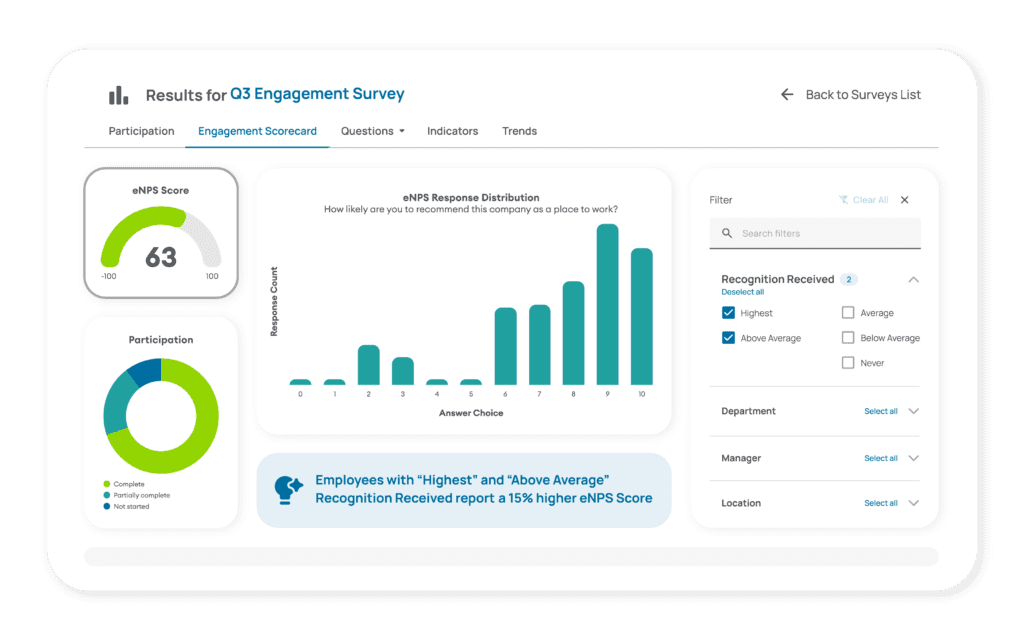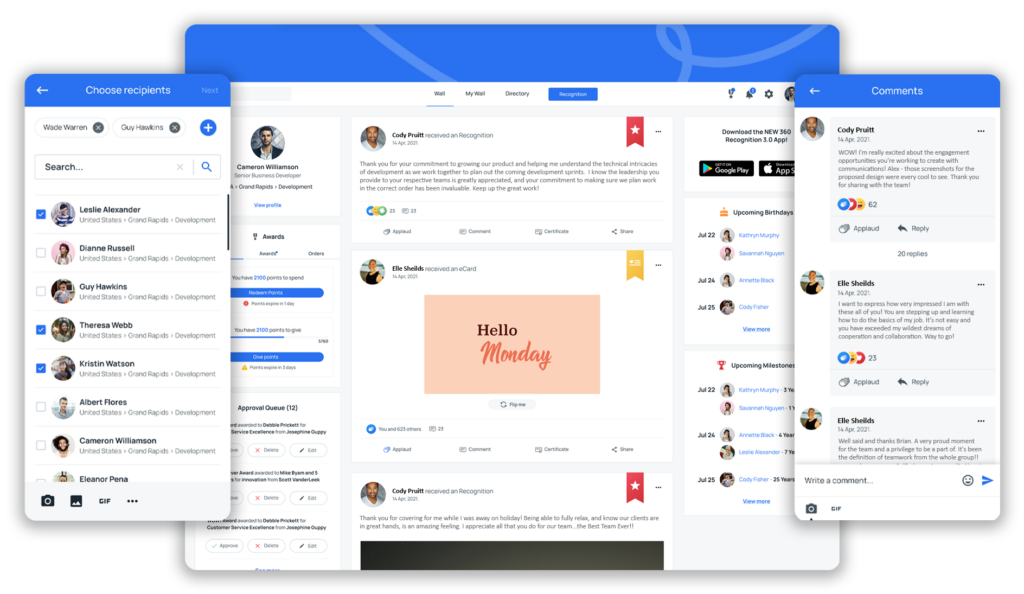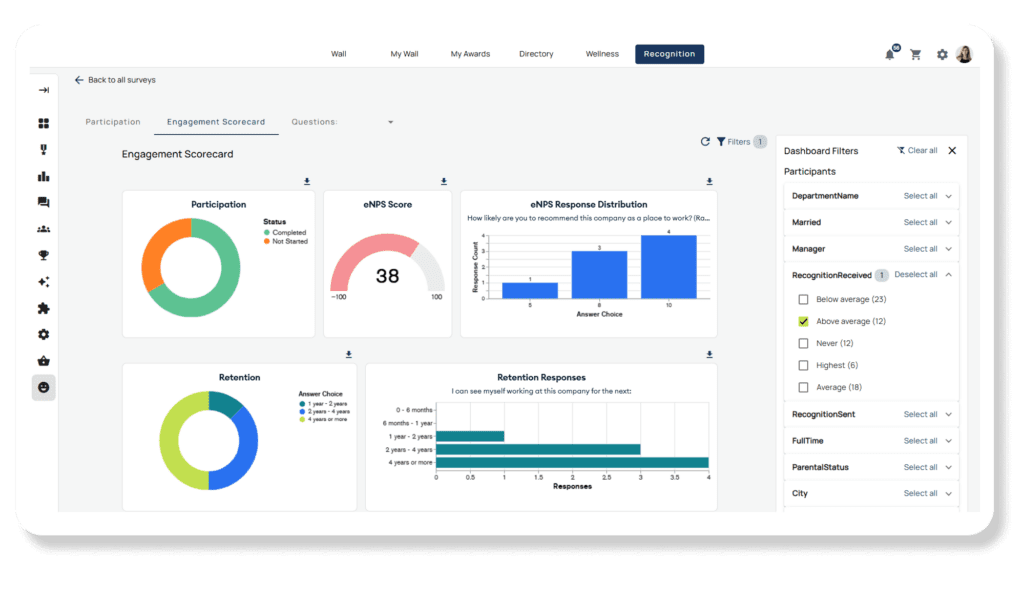August 11, 2025

The U.S. public sector is feeling the effects of budget cuts, layoffs, and cultural shifts, all of which have deepened an already declining trend in employee engagement. Much like in the corporate world, widespread job reductions—with up to 300,000 roles potentially impacted, according to The New York Times—have contributed to lower morale, reduced engagement, and decreased overall well-being across the workforce.
While recent austerity measures have played a role, they’re not the only factor. Industry data shows that public sector engagement had been declining well before these changes took place.
While layoffs and budget cuts have devastating impacts, your company’s culture defines how resilient your workforce is in hard times and how engaged people are.
That’s why we created this guide to help public sector organizations:
- Measure, quantify, and benchmark employee engagement in their organizations. Successful engagement programs are built on a thorough understanding of the factors impacting engagement in your organization.
- Drive cultural change with employee engagement programs tailored to strategic objectives. It’s time to move beyond the annual recognition dinner and towards tailored, always-on programs that shape your workplace culture.
- Build a business case for their engagement programs. Go beyond tracking high-level HR metrics, such as absenteeism and turnover. Combine program participation data with insights from employee listening to accurately measure the impact of your programs on engagement and retention.
- Select the right tools for scaling engagement programs and initiatives. Automate repetitive admin tasks, configure engagement programs tailored to strategic objectives, and tap into deep, centralized analytics.
6 Science-backed Factors Impacting Employee Engagement in the Public Sector
Various studies have investigated the factors impacting employee engagement in the public sector, and they’ve drawn similar conclusions. The consensus is that five core factors shape public sector engagement: leadership, training and development opportunities, work-life balance, recognition, and “intrinsic motivation” (an innate drive).
With the possible exception of intrinsic motivation, these factors are intertwined with your workplace culture. For example:
- A culture that empowers employees supports them with training and professional development opportunities.
- A workplace that prioritizes employee wellbeing supports work-life balance.
Naturally, it follows that the factors impacting employee engagement would also collectively model an organization’s culture. We set out to identify these key factors with the help of three independent PhD researchers: Laura Wang, Ryan Sommerfeldt, and Joe Burke.

With their help, we developed a culture model that measures and quantifies employee engagement. The model uses six factors, known as “engagement indicators,” which include:
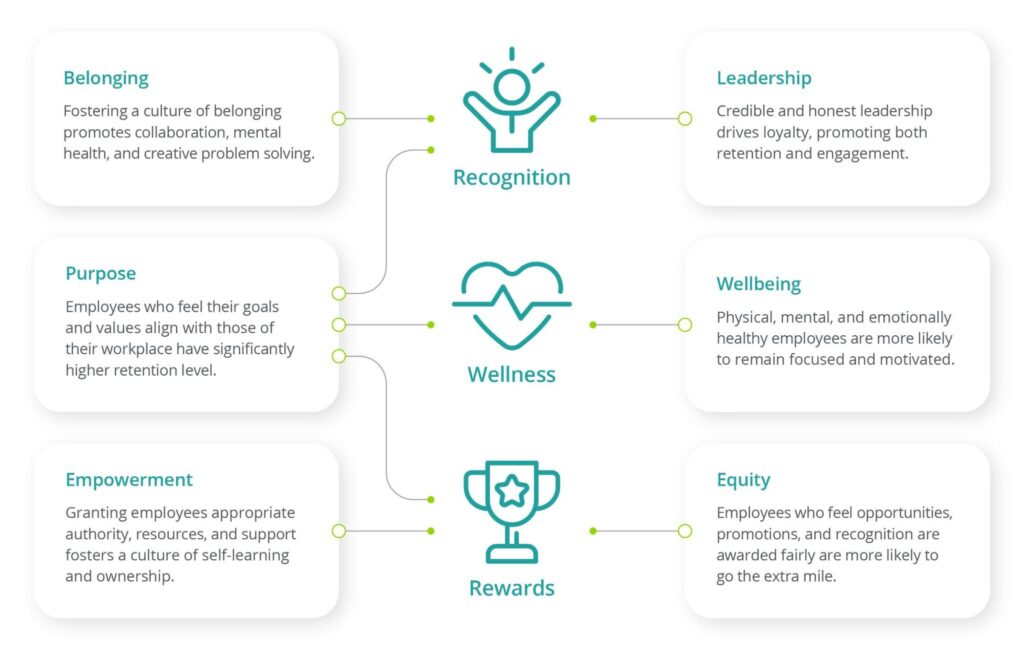
The engagement indicators contextualize the impact of your company’s culture on employee engagement. For example:
- Engaged employees feel a strong sense of empowerment when they have the tools they need to excel in their work.
- People feel a strong sense of purpose when they see how their work and values align with company goals.
Our indicators are also consistent with the findings from public sector engagement studies (e.g., “work-life balance” is linked to “wellbeing,” and “training and development” relates to “empowerment). But while other research studies highlight the importance of these indicators, they don’t tell you how to measure and quantify them in your organization.
Without a science-backed approach to measuring these factors, public sector organizations are left in the dark about how to practically improve engagement. For example, they might:
- Use exit, stay, and eNPS surveys to understand why specific people chose to leave or remain at the company, and which current employees are prone to leave. But knowing that Sam from Finance left for X reason doesn’t mean you can predict if Steve and Susan might leave for the same reason.
- Employee satisfaction surveys to track employee sentiments towards specific initiatives, processes, or people. While these insights are useful, they don’t quantify the impact of these employee sentiments on engagement.
We realized that organizations lacked a science-backed, predictive approach to measuring and tracking employee engagement. Our experts bridged the gap by developing a science-backed engagement baseline survey that measures and quantifies the six engagement indicators.
The engagement baseline survey, backed by I/O psychologists, returns a set of Likert scores (which can be positive or negative) corresponding to each engagement indicator. For example:
- Scoring +20 in purpose but -5 in wellbeing may indicate that, while your workforce is aligned with company objectives, people are struggling with stress or burnout.
- Low “leadership” and “empowerment” scores may signal a cultural problem for employee-manager relationships. These scores indicate that people don’t feel connected to their managers/direct supervisors or supported in their roles.
Combining these indicator scores with data from supporting surveys—e.g., eNPS and pulse surveys—can help you understand why specific scores are high or low across different groups.
Developing Your Employee Engagement Strategy and Program: An Actionable Framework for the Public Sector
Our “listen, measure, act, and optimize” framework is used by thousands of companies (across the public and private sectors) to measure, quantify, and drive employee engagement. In the following sections, we explain how to apply our framework to your organization (with examples).
1. Understand Employee Sentiments and Your Culture’s Impact with Employee Listening
Sporicidal employee surveys once a year won’t help you accurately track employee engagement. People’s sentiments evolve over time as responsibilities change, new hires join, managers change, and external factors interfere—and all these factors impact your company culture.
A formal employee listening program tracks employee sentiments over time, measures their impact on engagement and retention, and helps you take targeted action. There are four main considerations for making your listening program successful:
1. Using the right surveys to measure the right things
While the engagement baseline survey provides the data points you need to build a strategy, you’ll need to use additional surveys to uncover root causes. For example, if the baseline survey returns with:
- Low well-being scores for employees with 5–7 years of tenure, you might follow up with burnout and well-being drill-down surveys.
- Low purpose scores for employees in specific departments, you could use integration, purpose drill-down, and job-related employee satisfaction surveys to capture more context.
2. Survey cadence
We strongly advocate for continuous employee listening programs—ones that track changing sentiments over time and show employees that you value their feedback.
Launching a continuous listening program doesn’t mean you run every type of survey every month. For example, you might run the engagement baseline survey once per quarter to benchmark engagement.
This way you can regularly track employee sentiments by administering pulse surveys throughout the year. They’ll help you monitor how people feel about specific projects, colleagues, processes, and other aspects of their work.
The regular insights from your pulse surveys feed into the baseline survey’s broader picture of engagement.
3. Maximizing participation
You’ll get the most accurate picture of employee engagement by ensuring your data accurately reflects the sentiments of your entire workforce. In general, increasing participation comes down to:
- Accessibility. Make it easy for everyone to participate. For example, if your frontline workers don’t have corporate email addresses, consider using QR-based or paper-based surveys.
- Survey design. Generally, short surveys with concise questions and clear response options (e.g., Likert surveys with options ranging from "Strongly Disagree" to “Strongly Agree”) yield the highest completion rates.
- Making people feel heard. Employees are more motivated to fill in surveys if they believe you take their feedback seriously and will take action.
4. Cohort analysis
You’ll rarely find two employees who are impacted by your culture in the exact same way.
Five people in the same team with similar levels of tenure might score very differently in “belonging” and “leadership.” Some people stay under a manager they aren’t happy with because they’ve got supportive coworkers. Others in the same situation might choose to leave anyway.
While you can’t track any one employee’s sentiments and engagement perfectly, you can achieve the next best option: identifying trends. Analyzing different cohorts—such as individuals with the same manager, tenure, age, or department—can help identify trends in employee sentiment.
For example, let’s consider the baseline survey again. Instead of just analyzing organization-wide results, you might look for:
- Differences in engagement indicator scores amongst public sector employees with different tenures. For example, do people with five years of service have a stronger or weaker sense of purpose than those with three years?
- Department trends. Let’s say your sales department has the highest rate of voluntary turnover, and you want to uncover the cause. You can run engagement baseline and eNPS surveys in the finance department and measure which engagement indicator scores are the lowest amongst the cohort with low eNPS.
2. Take Action with Tailored Employee Engagement Programs
Before we get to the building blocks of a successful program, here’s a quick overview of the main culprits that cause public sector engagement programs to fail:
🚫 Programs aren’t designed around strategic objectives.
Sporadically handing out gift cards and the annual recognition dinner are some of the worst offenders here. While these initiatives aren’t inherently bad, they’re rarely tied to clear outcomes—such as shaping culture by recognizing employees for their unique contributions.
🚫 Organizations don’t look beyond one-size-fits-all programs.
Company-wide programs, such as years-of-service or peer recognition, can help shape workplace culture and drive employee engagement. Yet, they rarely cover all fronts. Complementing them with smaller programs tailored to the needs of specific cohorts is key to addressing any gaps.
🚫 Program leaders aren’t measuring the right metrics.
High-level metrics, such as employee turnover and absenteeism, are helpful, but they don’t accurately track the individual impact of engagement programs. Similarly, program participation metrics don’t reveal the effect of these programs on engagement—not without additional insights, anyway.
🚫 They’re not inclusive by design.
Programs should provide equitable experiences for all employees, including deskless and desk-based workers, individuals from diverse backgrounds, employees at different seniority levels, etc.
In the next sections, we’ll take you through the key considerations for designing impactful engagement programs that deliver. This includes how to:
- Tailor your programs to strategic objectives by choosing the ones that best suit your needs.
- Make your programs inclusive and motivate people to participate in them.
- Build a business case for your programs and prove their ROI.
i. Selecting the right program and aligning it with strategic objectives
Overcoming the public sector’s engagement problem requires moving beyond disparate initiatives and embracing formal programs tied to strategic objectives. The U.S. Office of Personnel Management has taken steps in this direction with its recent directive to revamp employee performance programs. It directs public sector organizations to:
- Distinguish the requirements for achieving performance at various performance levels.
- Define success criteria.
- Make sure people are recognized for “truly distinguished performance.”
The impact these revamped programs have on an organization’s culture depends on how (1) public sector leaders define the success criteria, and (2) they execute the program.
Encouraging people to compete on performance metrics isn’t the only way to tailor your engagement program. For example, many companies shape their culture using engagement programs tailored to their core values:
Chelsea Groton Bank
Chelsea Groton Bank’s peer recognition program motivates employees to recognize each other for demonstrating the company’s core values or going above and beyond in their work.
Like many growing companies, Chelsea Groton (the largest mutual bank in Eastern Connecticut) struggled to cultivate its culture and instill core values across its large, distributed workforce. We helped Chelsea Groton Bank launch a peer recognition program that promotes its seven core values and fosters deeper connections among employees across locations.
“I have the opportunity—not only as an administrator—but also as a fellow employee, to log in and see what an employee at another branch did for a customer that I would never have known about if we didn’t have this program.”
– Rachel Evrett, HR Specialist at Chelsea Groton Bank
The program, called Acorn Rewards, includes different recognition levels and rewards. Employees who receive the Mighty Oak Award—the highest level of recognition in the program—are recognized for their contributions by the company’s senior leadership.
Tidelands Health
Tidelands Health launched always-on manager and peer recognition programs and abandoned on-the-spot recognition with gift cards.
Tidelands Health, the largest healthcare provider in coastal South Carolina, sought to increase employee engagement by giving meaningful recognition to its employee partners. The healthcare provider previously used on-the-spot recognition with gift cards, which failed to meaningfully drive engagement.
“I’m a firm believer that, if you have a good employee recognition program, it can help drive overall employee engagement.”
– Jeremy Stephens, Associate VP of Human Resources Operations
With our help, Tidelands Health launched an always-on peer recognition program that encouraged employees to recognize their peers for upholding the company’s core values: People, Service, Quality, Safety, Finance, and Growth.
The peer recognition program increased Tidelands Health’s employee engagement from 68% to 77% in just one year. (You can find the full story on our case studies page.)
These peer recognition programs were so effective because they:
- Reward people for outcomes that impact your culture. It’s one thing to have a company handbook that outlines core values; it’s another to actively encourage and reward people for demonstrating them. A formal recognition program shows employees that you’re serious about promoting these values—and they’ll be recognized and rewarded for upholding them.
- Consistently motivate people to participate. Employees don’t just receive recognition—they’re also empowered to give it. Workers can formally recognize their peers for being honest, kind, supportive, or for playing a key role in completing a project. Employees aren’t just idle participants in your program anymore—they’re actively responsible for driving your culture forward.
Peer recognition programs aren’t your only option—in fact, they’re not even the only type of recognition program. For example, many companies instill core values across their growing, distributed teams using years-of-service awards programs. Employees are recognized for their contributions, achievements, and upholding of core values at their service anniversaries.
The takeaway here is that different engagement programs can help you achieve your goals; what’s most important is making sure they’re relevant and tied to strategic objectives. Let’s take a closer look at two detailed scenarios where an organization can benefit from tailored engagement programs.
Scenario 1: Employees with 7+ years of tenure are the least recognized
You’ve been running a recognition program for a year, and recent program analytics show that your “least recognized” employee segment consists solely of people with at least seven years of tenure. Using engagement indicators and drill-down surveys, you investigate further.
You learn that employees with over seven years of tenure:
- Report to more senior leaders. These senior leaders are responsible for multiple locations, so their interaction with direct reports is limited.
- Have limited interaction with peers of their seniority level. Consequently, there’s less opportunity for them to recognize each other’s efforts.
- Score low in “empowerment” and “equity” and have lower eNPS scores. They have negative sentiments towards their prospects and don’t feel supported in their everyday roles. Consequently, they’re more prone to leave.
Based on these insights, you might consider:
- Launching a years-of-service awards program that recognizes people’s unique contributions and achievements over the years. At each service anniversary:
- Senior leaders can present a custom award and acknowledge the recipient’s contributions.
- You can engage employees across different branches (especially ones with similar tenure) in the recognition moments, either physically (e.g., inviting everyone to the same space for the anniversary), or digitally (e.g., documenting the moment and distributing it in an internal newsletter).
- Reevaluating your career development and learning and development programs to better support employees with 7+ years of service. Or, you can launch tailored programs specifically for this segment.
Scenario 2: Retention rates are low for frontline workers because they have fewer prospects
Your employee listening program reveals that your most recognized frontline workers feel a low sense of equity and have lower eNPS. You investigate further:
- Using drill-down surveys, you discover that frontline workers aren’t optimistic about their opportunities for being promoted to management positions.
- Upon investigation, you discover that frontline workers are rarely promoted to management positions within your organization, and these roles are typically filled externally.
In this scenario, let’s say your company hires externally because frontline workers lack the relevant skills for management positions. While they’re highly recognized for the work they do, they’ve got fewer opportunities to grow in your company, negatively impacting engagement and retention.
To bridge this gap, consider launching a voluntary upskilling program to equip frontline employees with management skills.
ii. Maximizing participation: incentives & inclusivity
You’ll struggle to achieve your strategic objectives even with the most well-designed engagement programs if participation numbers are low. The three main considerations for maximizing participation are:
Consideration 1: Getting leadership involved
In the public sector, research underscores the significant impact of senior leadership on employee engagement. Involving leaders has the immediate benefit of showing your workforce that these engagement programs and their objectives are taken seriously.
Regularly engaging with every worker is rarely practical for senior leaders, but you can involve them in special recognition moments. For example, many effective engagement programs adopt a “tiered” approach to involving different levels of leadership:
- Employee recognition programs may involve managers/direct supervisors for recognition moments related to daily operations, such as acknowledging people for going above and beyond in their work, being team players, or correctly following protocols. They’ll engage senior executives and leaders for more special recognition moments, such as:
- Rewarding employees who upheld the company’s core values the most over the previous quarter.
- Handing out custom awards on years of service anniversaries.
- Professional development programs. While direct supervisors might be responsible for developing tailored career paths and learning programs, you can arrange for people to meet senior leaders in the roles they aspire to grow into.
Consideration 2: Choosing the right incentives
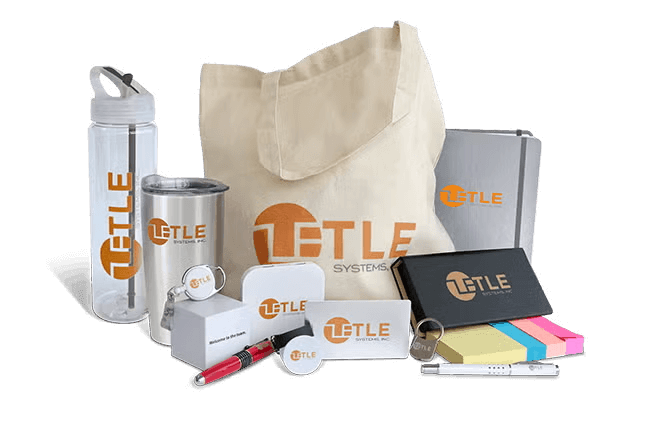
If your engagement program is tailored to strategic objectives, then you’ve already given employees some incentive to participate. For example, this could be a wellness program to reduce workplace stress, or a recognition program that celebrates people’s contributions and achievements.
Having said that, integrating rewards into your program is key to consistently driving participation across your organization. Rewards incentivize the incremental actions people take within your program. For example, your employees may be on board with the idea of a peer recognition program or a step challenge.
But, are they consciously focused on getting more steps in throughout the week? And do they prioritize regularly upholding your core values (even when it’s difficult)? Adding rewards to your program motivates people to take these steps consistently.
When deciding which rewards to include, the two main considerations are:
- The type of engagement program and its objectives. For example, let’s say you’ve launched:
- A wellness program designed to help people increase their personal fitness. You might consider rewards like a fitness tracker, water bottle, or a yoga mat.
- A years-of-service awards program that celebrates people’s contributions. Custom awards, such as trophies, plaques, and personalized jewelry, are popular choices for these programs. You can engrave the recipient’s name and tailor the award to their year of service.
- The recipient’s preferences. When someone’s nominated for an award or has a service anniversary coming up, you could ask their peers and manager to recommend rewards they might like. Collecting recommendations at scale isn’t easy though, especially for growing workforces (plus, if you get conflicting recommendations, your decision becomes even more complicated).If you’re using a rewards platform, the points system is helpful here. You can award employees redeemable points, which they can exchange for their preferred gifts (e.g., electronics, travel vouchers, SWAG, dinner with the family).
Consideration 3: Making your programs inclusive and accessible
When designing your engagement program, there are two types of considerations for making it inclusive:
- Your workforce setup. For example:
- Does your workforce include a mix of desk and non-desk workers?
- Do you offer remote, on-site, and hybrid work options?
- Is your workforce distributed across different locations?
- Accessibility barriers for specific groups. For example, does your wellness program accommodate elderly and differently-abled employees? Do your career development programs cater to the needs of specific cohorts?
There’s no single “right” approach to address these barriers/workforce considerations—but there is a toolkit that consists of three options:
- Technology. Choosing an employee engagement platform with built-in accessibility features can help you develop more inclusive programs. For example, you might choose a solution that supports:
- Non-desk workers with password-less login and offline rewards redemptions.
- People who move differently in your step challenge program, by using an activity tracker to fairly convert their movement into steps.
- Program design. For example, you can:
- Connect your large, distributed workforce to the company’s culture with a peer recognition program.
- Support a primarily deskless workforce with an on-site years-of-service awards program that engages senior leadership.
- Tailored programs. Launch programs that meet the needs of specific cohorts. If you can’t meet all your employees’ needs with a particular engagement program, consider launching multiple smaller ones. For example, employees aged 20-35 may have different wellness needs than those aged 35 and above. You could launch two separate wellness programs tailored to each segment.
3. Measure Impact and Prioritize Continuous Improvement
You launched your engagement programs with specific objectives—such as to increase employees’ connection to leadership, boost retention, improve wellbeing, or create a more inclusive culture. How do you now measure and quantify success?
Broad HR metrics, such as absenteeism and employee retention rate, can help you track high-level objectives (e.g., improving retention of Gen Z workers and employees with 7+ years of tenure). However, they don’t measure the specific impact of your engagement programs.
For example, let’s say your retention rates improve six months after launching a recognition program. You might (rightfully) speculate that your recognition program reduced employee turnover, but you can’t prove it without the right data. Specifically, you’ll need two sets of data:
- Program participation metrics, including the number of participants, which employees and managers have participated the most and least, and program-specific data (e.g., for a recognition program, who are your most and least recognized employees?). If you’re using employee engagement software, you’ll usually find these metrics in the analytics dashboard(s).
- Insights from employee listening. Engagement indicator scores are critical for proving your program’s impact on employee engagement. Tracking eNPS helps measure the impact on retention, and the context you capture from follow-up and drill-down surveys can tell you more about what is and isn’t working.
By combining these sets of data, you can measure insights such as:
- Your peer recognition program’s impact on employee engagement:
- Differences in engagement indicator scores for your most and least recognized employees. For example, do your most recognized employees have a stronger sense of “purpose” and/or “belonging?” Are any indicators decreasing?
- Trends across different cohorts. Are some groups of employees (e.g., deskless workers or employees in a specific age group) prone to more or less recognition? What’s the impact on their engagement indicator scores?
- Changes in engagement indicator scores of your most recognized employees over time. Interestingly, some companies observe a decline in the well-being and purpose scores of their most recognized employees over time. These cases occur when an employee’s responsibilities have changed considerably over time. For example, maybe you hired someone passionate about public service and being on the front lines. They enjoy working with their hands and interacting with people from diverse communities. Since they’ve also got all the traits of a good, responsible leader, they’re given additional responsibilities that they’re less passionate about. Over time, they feel burned out and less enthusiastic about their job.
- The impact of leadership on engagement programs. Take two groups: 1) teams with managers who are highly participatory in the program, and 2) teams with managers who don’t participate much—or at all. For these groups, compare:
- Participation numbers
- Engagement indicator scores
- eNPS
Scale Your Engagement Program(s) with Terryberry’s Employee Engagement Platform
If you plan to launch one or more dedicated employee engagement programs, investing in an employee engagement platform is more of a necessity than a nice-to-have. Without it:
- Admin work is never-ending. From managing nominations and approvals, to ordering rewards, tracking fulfillment, and making sure people participate—there are many tasks behind the scenes.
- Making your programs inclusive is a challenge. You need to think about the different types of workers you might have—desk and deskless, maybe some remote ones, maybe teams distributed across different locations.
- Measuring impact is a nightmare. The worst case: you’re tracking metrics manually (e.g., participation). The best case: you’ve got scattered data across different systems. Either way, reliably measuring the impact of each program on employee engagement is either very difficult, or out of the question.
Terryberry’s employee engagement platform is uniquely designed to help you launch tailored programs and measure their impact because it’s centralized. In practice, this means:
- Admin work is reduced by design. Terryberry automates the tedious, manual work involved in running and scaling engagement programs, from managing approvals to sending reminders and ordering rewards.
- You’ve got the best case for measurement: deep, centralized analytics to help you prove ROI. Terryberry’s engagement platform lets you measure the impact of your employee listening, recognition, and wellness programs.
Here’s more on how to design, launch, and scale tailored employee engagement programs with Terryberry.
1. Capture and Analyze Employee Sentiments with Automated Employee Listening
Terryberry’s employee listening tool automates the time-consuming, manual tasks that make it difficult for growing organizations to scale their listening programs. It includes:
- A library with dozens of pre-built surveys, including science-backed surveys like the engagement baseline. Benchmark employee engagement using the baseline survey and automatically follow up with drill-down, employee satisfaction, and scenario-specific surveys to capture deeper insights.
- An AI-survey builder. Need to capture feedback or employee sentiments for a new scenario? Terryberry’s AI survey builder interprets your requirements and instantly generates a tailored employee survey using questions from our library.
- Automated scheduling and follow-ups. Schedule surveys and their associated communications in advance. We also recommend the best dates for sending follow-ups to maximize participation, based on Terryberry’s internal research.
- Advanced survey analytics with built-in benchmarking capabilities. Uncover insights beyond aggregate data using Terryberry’s participant filters—segment by department, manager, tenure, location, and more.
“To retain employees for 10, 20, or 30 years, you need to listen to them. Terryberry gives us the tools to do that. The heatmaps allow us to identify & address disparities in employee experiences across different shops. We can now ask the right questions and take action where it’s needed most.”
– Dan Norris, VP of Talent Development at a 3-Billion-Dollar Heavy Equipment Company (read the full case study here)
2. Launch Tailored Employee Engagement Programs
When you’re ready to bridge the cultural gaps impacting employee engagement, take action by configuring and scaling tailored employee recognition and wellness programs with Terryberry. Our engagement platform lets you:
- Align engagement programs with strategic objectives, whether you’re looking to improve people’s sentiments towards senior leadership or promote core values across growing, distributed teams. You can launch tailored recognition and wellness programs in a single, centralized platform.
- Motivate people with the right incentives.
- Through our partnership with Amazon Business, we offer the widest selection of rewards in the market to businesses in the U.S, with Prime-like delivery.
- Looking to build a custom rewards portal for your engagement program? Choose from various categories in Terryberry’s Premium Awards catalog, ranging from electronics and luxury awards to once-in-a-lifetime experiences and charitable donations.
We’ve partnered with local fulfillment providers across over 100 countries to bring Premium Awards to globally distributed teams. - Create inclusive experiences. We bring your engagement programs to where your team works, whether that’s on Slack, MS Teams, or offline. We support passwordless login, and offline rewards redemptions (including via QR codes), surveys, and recognition.
3. Measure Impact and Build Your Business Case
Get a complete overview of employee engagement in your organization with Terryberry’s centralized analytics. View insights across all your employee listening, recognition, and wellness programs and track their impact on employee engagement—and each other.
With Terryberry’s unified analytics, you can measure insights like:
- The impact of employee recognition and employee wellness on retention.
- How employee recognition impacts wellness.
- How your employee wellness program impacts recognition.
- How manager participation impacts employee wellness and recognition.
You can break these insights down by cohort to gauge the impact on specific groups.
Get Full-Service Support When You Choose Terryberry’s Employee Engagement Platform
Terryberry’s employee engagement platform offers all the tools you need to launch and scale tailored employee listening, recognition, and wellness programs in one place. But we know that building these programs from scratch, especially for businesses with complex needs, isn’t easy.
At Terryberry, our team works with you at every stage, aligning programs with company goals, making them accessible, and building a business case to present to leadership.
Here’s what customers have to say about working with Terryberry:
“We were really impressed with Terryberry’s collaborative and creative approach in coming up with a solution that works so effectively for us. The team really took the time to understand our business and what’s important to us and came up with a creative solution that’s already having a really positive impact on all our colleagues.”
– Jane Walapu, Colleague Recognition Programme Lead, the Co-op
“Having the team from Terryberry behind the scenes has really helped our program succeed. Alex, Donna and Arvid have always been very helpful in providing anything that we ever need, whether it’s reports, research, or modifications to the site. That’s another reason for the level of success that we’ve seen.”
– Rachel Evrett, HR Specialist at Chelsea Groton Bank
“The process (for designing custom rings) blew me away. It was so easy. I shared photos of what we envisioned, and within days, we had mockups of new designs. Alex from Terryberry made it flexible and stress-free, even when our team couldn’t finalize decisions quickly. It feels like we’ve just scratched the surface of what’s possible with Terryberry when it comes to valuing and applauding the people who make Amteck what it is."
– Matt Noble, Marketing and Communications Manager at Amteck
Ready to change the public sector’s track record? Schedule a demo with Terryberry today—let's launch and scale impactful engagement programs together.
